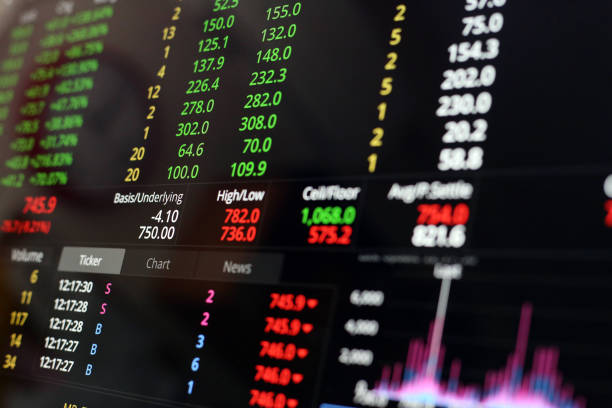Stock ITOT: To grow your wealth in the capital market, you ought to understand its complexities. There is no shortage of options. One particular pathway of choice, yet beset with both challenges and opportunities, is investing in ITOT. Here, we discuss the ITOT stock market in detail, offering indispensable information for both the practiced investor and the novice.
What is ITOT?
At the heart of the matter, ITOT translates to iShares Core S&P Total US Stock Market ETF. It represents an exchange-traded fund that aims to replicate the whole performance of the U.S. stock market. In essence, ITOT investment provides diversified access to the U.S. equity market, encompassing numerous sectors and size tiers.
Advantages of Investing in Stock ITOT
Diversification: One of the major benefits of buying into ITOT is the natural diversification present in the portfolio. By holding a basket of stocks across various sectors, ITOT reduces the risk attributable to individual stock selection. For example, while an economy is stagnant in one industry, the other sectors might either remain stable or even be on the rise, thus, partially offsetting an assignment risk.
Low Cost: On average, passive index funds like ITOT tend to be cheaper to run and hence offer a cheaper option for investors looking to save on expenses. This low-cost structure ensures that the investor retains a larger percentage of investment returns over the long term, contributing to the wealth accumulation in the economy in the long run.
Market Performance: The purpose of investing in ITOT is to follow the performance of the total US stock market, where investors can benefit from general economic expansion. The passive investment approach removes the need for constant attention and realignment of individual stock positions, permitting investors to concentrate on the wider economic dynamics and long-term investment objectives.
Risks and Considerations
While ITOT offers numerous advantages, it’s essential to consider potential risks and factors that may impact investment outcomes:
Market Volatility: Like any investment in the stock market, ITOT is sensitive to market variability which in its turn gives rise to fluctuations in the value of the fund. Investors know they have to face short-term market fluctuations and maintain a long-term investment horizon just to withstand the volatility that will come.

Sector Concentration: The ITOT ETF offers broad exposure to the U.S. stock market as a whole, however, the fund tends to give disproportionate weighting to some sectors, which may increase the sector concentration risk. Investors should analyze their risk threshold and diversify into various asset classes to avoid concentration risk.
Tracking Error: Contrary to its intention to closely mirror the performance of the total U.S. stock market, the active component occasionally incurs tracking errors that result in deviations from the market index. Investors should thoroughly examine fund performance measurements and expense ratios, the purpose of which is to make sure they are aligned with the investment goals.
Key Considerations Before Investing
Before joining the ITOT market, you need to look into a few factors to make intelligent investment decisions.
Assessing Risk Appetite
Evaluate your risk tolerance level and investment objectives to ascertain whether ITOT corresponds with your fiscal aims. Think over elements such as time in the market, frequency of cash flow, and risk tolerance level. Investors who have a higher risk tolerance and a longer investment horizon might be better aligned with ITOT’s long-term growth prospects.
Conducting Market Research
ITOT research conducts a thorough on the current market conditions, economic outlook, and sector performance in order to get insight into the trajectories of ITOT moving forward. Watch major economic indicators like GDP, unemployment rates, and consumer attitude saying your overall economic picture. Also, dissect sector-specific metrics and omnibus emerging market themes to pinpoint investment prospects within ITOT portfolio holdings.
Long-Term Outlook
Stock ITOT is good for investment horizons long-term and investors are supposed to tolerate market volatility and benefit from the effect of compounding. Create a structured investment plan, based on your long-term financial objectives and your risk appetite. Take into account factors like dollar-cost averaging, portfolio rebalancing, and tax-efficient investing schemes for maximum returns and minimum risk in the long run.
Strategies for Maximizing Returns
Investing in ITOT gives you a wide range of stocks from the United States; however, using some strategies may boost the return.
Dollar Cost Average

Dollar-cost average plan is for investing a fixed sum in stock ITOT. Thus, the adverse effect of the market fluctuations will be neutralized while you can benefit from dollar cost averaging. Through regular investments, investors can diminish the consequences of market fluctuations on their total returns and therefore, decrease the average price of one share.
Portfolio Rebalancing
Periodically rebalance your portfolio so as to maintain desired asset allocation and exploit market opportunities. Rebalancing involves disposing of assets that have performed well and investing their proceeds to the underperforming assets to bring the target asset allocation back into balance. This disciplined strategy enables investors to follow it disciplined and refrain from making the emotional decision making during market fluctuations.
Also Read: How to Start a Business in America | A Step-by-Step Guide
Tax-Efficient Investing
Think about the tax impacts of stock ITOT investments and seek tax-efficient techniques for maximizing returns, Strategies like tax-loss harvesting, asset location, and tax-deferred accounts may be employed to reduce taxes and maximize after-tax returns. Discuss with a tax advisor or financial planner a tax-efficient investment strategy suited to your particular financial circumstances.
Final Verdicts
Analyzing exchange-traded stock ITOT gives the investor an opportunity to get diversified exposure to the U.S. stock market. Mastering its essentials, pros and cons, investors can walk through this terrain equipped with surefootedness and yield the best from their investment.

